In healthcare, every patient and professional should be treated with respect, dignity, and understanding. Inclusivity, Diversity, Equity, and Accessibility (IDEA) are guide these values in the workplace. This training course helps healthcare providers can create environments where all individuals – regardless of their background, identity, or abilities – feel welcomed.
This course equips healthcare professionals with the tools and knowledge they need to foster inclusivity. Whether you’re working directly with patients, managing teams, or navigating the complexities of healthcare systems, this training provides actionable insights to improve patient care.
Take this course to learn how to build inclusive, equitable, and accessible healthcare environments that celebrate diversity.
What You Will Learn:
- Different types of implicit biases that may affect healthcare decisions
- The importance of cultural competency in delivering effective and compassionate patient care
- Barriers to equitable healthcare access
Details:
Course length: 20 minutes; CME: 0.25
Languages: American English
Key features: Audio narration, learning activity, and post-assessment.
American Medical Compliance is accredited by the Accreditation Council for Continuing Medical Education (ACCME) to provide continuing medical education to physicians. Our Continuing Medical Education (CME) program is committed to enhancing the knowledge, skills, and professional performance of healthcare providers to improve patient care outcomes. Through high-quality educational activities, we aim to address the identified educational gaps and to support the continuous professional development of our medical community. American Medical Compliance designates this activity for a maximum of 0.25 AMA PRA Category 1 Credits. Physicians should only claim this credit for their complete participation in this activity.
Get Certified
American Medical Compliance (AMC) is a leader in the industry for compliance, Billing, and HR solutions. To become certified, please visit us at: American Medical Compliance (AMC).
Reach out for other courses by visiting the AMC Course Library.
A Longstanding Commitment to Inclusivity, Diversity, Equity, and Accessibility (IDEA)
The past decade has seen a surge in Inclusivity, Diversity, Equity, and Accessibility (IDEA). For centuries, individuals and communities have advocated for the rights and fair treatment of marginalized groups, striving to ensure that everyone has equal access to opportunities.
The concept of IDEA has evolved over time, gaining momentum as societal awareness of systemic inequalities grew. Healthcare, in particular, has made significant progress in promoting diversity and accessibility. This foundational work has paved the way for more formalized IDEA initiatives within healthcare institutions.
In this course, we will explore the rich history of IDEA in healthcare, recognizing the strides made. Understanding this historical context will deepen your appreciation for current changes and the important work ahead.
Legal Protections Against Employment Discrimination
Applicants, employees, and former employees are protected from employment discrimination based on characteristics like race, color, and religion. Federal laws mandate these protections to ensure individuals are not subjected to unfair treatment in the workplace.
In healthcare, where professionals interact with a diverse patient population, these protections are critical in fostering a respectful work environment. Healthcare organizations must not only comply with these legal requirements but actively cultivate a culture that embraces diversity. Through proper training and awareness, healthcare institutions can ensure that all employees feel valued. This course will explore these legal frameworks and their practical applications, empowering healthcare professionals to understand the laws that safeguard equality.
Understanding the Differences Between Diversity, Equity, and Inclusion
Understanding the differences between diversity, equity, and inclusion is crucial, as these concepts each play a role in creating a fair environment.
Diversity refers to the presence of differences within a given setting, such as race, ethnicity, and more. It emphasizes the importance of recognizing and valuing the varied backgrounds and perspectives that individuals bring to the workplace. In healthcare, diversity ensures that the team reflects the community it serves, providing a broader range of experiences.
Equity goes beyond equality and focuses on fairness – ensuring that everyone has the same opportunities needed to succeed. In healthcare, equity means addressing systemic barriers that affect underserved populations, ensuring that all individuals receive the care they deserve.
Inclusion is about creating an environment where all individuals feel respected and empowered to contribute to their fullest potential. It is not enough to simply have diverse individuals in the workplace; inclusion ensures that everyone feels welcomed.
In this course, we will explore how each of these concepts contributes to a more inclusive healthcare system.
Diversity: Valuing Backgrounds, Identities, and Experiences
Diversity involves appreciation and prioritization of different backgrounds, identities, and experiences, both collectively and as individuals. In healthcare, diversity is essential because it reflects that variety of patients, families, and communities that professionals serve. It encompasses a wide range of factors, including race, ethnicity, gender, age, sexual orientation, disability, religion, and cultural experiences.
Embracing diversity in healthcare goes beyond recognizing differences – it involves understanding the unique perspectives that each individual brings to the table. Diverse teams are more innovative, respectful, and effective in solving complex challenges. When healthcare professionals represent a broad spectrum of experiences, they can offer more comprehensive care.
In this course, we will explore the importance of diversity in healthcare settings and how to celebrate it. By appreciating and leveraging diversity, healthcare organizations can create a more inclusive environment for both providers and patients.
Equity: Addressing Disparities and Fostering Fairness
Equity recognizes that not all people are starting from the same place due to historic systems of oppression. In healthcare, this means recognizing that certain groups have faced barriers to accessing quality care. These disparities are often stem from historical inequalities that continue to impact individuals today.
Equity goes beyond treating everyone the same. It involves actively identifying and addressing these disparities – whether through policy changes or improving access to care.
In this course, we will explore the concept of equity, examining how healthcare professionals can close gaps in care. Equity is an ongoing effort to correct systemic imbalances.
Empowering Communities Through Support and Resource Redistribution
Equity provides different levels of support based on the needs of an individual to achieve fairness in outcomes. Unlike equality, which treats everyone the same, equity acknowledges that some individuals require additional resources to overcome challenges posed by systemic barriers. In healthcare, this means tailoring support and interventions to the unique needs of patients and communities.
Equity actionably empowers communities most impacted by systemic oppression and requires the redistribution of resources to these communities. This includes removing obstacles to healthcare access and addressing healthcare disparities. By redistributing resources and authority, healthcare organizations can create systems that better serve these communities.
In this course, we will explore practical strategies for implementing equity in healthcare. From policy changes to community engagement, we’ll look at how healthcare professionals can take action to address disparities. Equity is not just an ideal – it is a vital principle that can drive real change in healthcare systems.
Inclusion: Fostering Belonging and Valuing Diverse Contributions
Inclusion creates state of belonging where people of different backgrounds, experiences, and identities are valued, integrated, and welcomed equitably as decision-makers, collaborators, and colleagues. It goes beyond simply having diverse individuals in the room – it’s about ensuring that everyone has an equal voice and opportunity to participate fully, without fear of exclusion or discrimination.
In healthcare, inclusion is essential for creating a collaborative environment where all professionals feel empowered to contribute to their expertise, regardless of their race, gender, disability, or other characteristics. When healthcare workers from diverse backgrounds participate in decision-making processes and team dynamics, the entire organization benefits. Inclusive practices lead to stronger collaboration, better communication, and ultimately improved patient care, as all perspectives are considered in the process.
In this course, we will explore how inclusion plays a critical role in healthcare settings. You’ll learn how to create a welcoming atmosphere for all individuals and ensure that everyone feels valued and respected. By fostering inclusion, healthcare organizations can build stronger, more effective teams and create a culture that drives positive outcomes for both employees and patients.
Affirmative Action and Equal Employment Laws
Affirmative action and equal employment laws emerged in the middle of the 1960s, following the introduction of equal employment laws and affirmative action. The Civil Rights Act of 1964 and subsequent legislation created more inclusive and equitable opportunities, prohibiting discrimination based on race, color, religion, sex, or national origin.
Affirmative action programs proactively promote equal opportunities for historically underrepresented groups. These initiatives encourage employers to take specific steps to increase the representation of women and minorities, particularly in roles or industries where they have been systematically excluded. Equal employment laws reinforce these efforts, ensuring that individuals were treated fairly and had access to the same opportunities in their careers, regardless of their background.
In healthcare, these laws have significantly promoted a more diverse and inclusive workforce. As healthcare systems recognize the importance of diversity in providing high-quality care, these legal frameworks help foster an environment where all professionals can thrive. In this course, we will examine how affirmative action and equal employment laws have shaped the modern healthcare workforce and the continued need for their enforcement and evolution to address the ongoing disparities.



